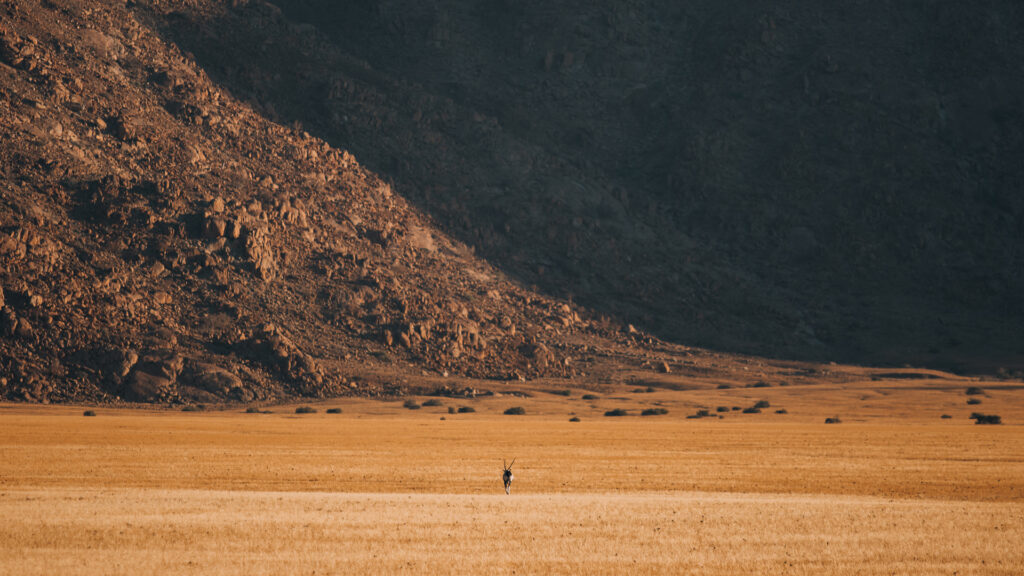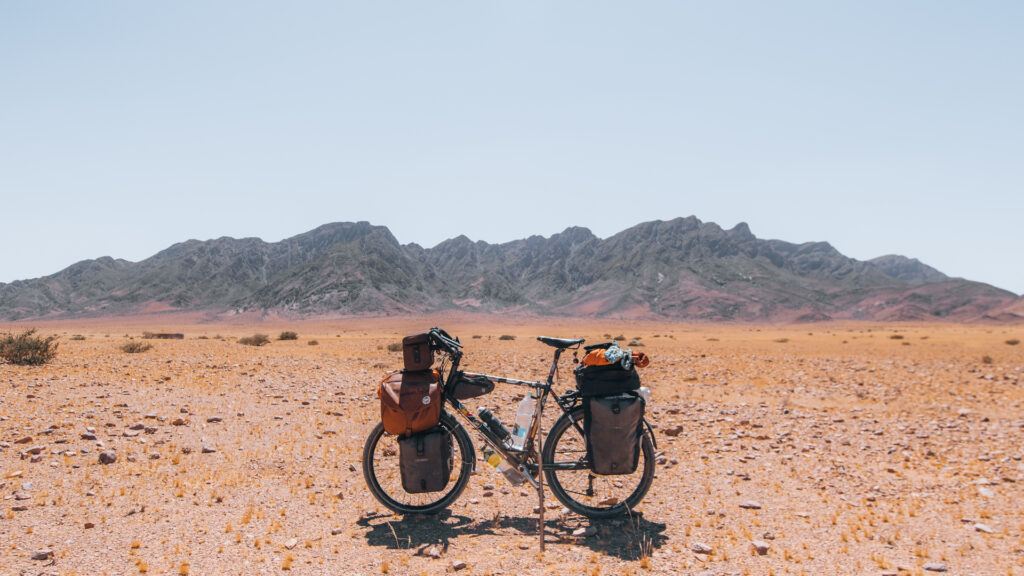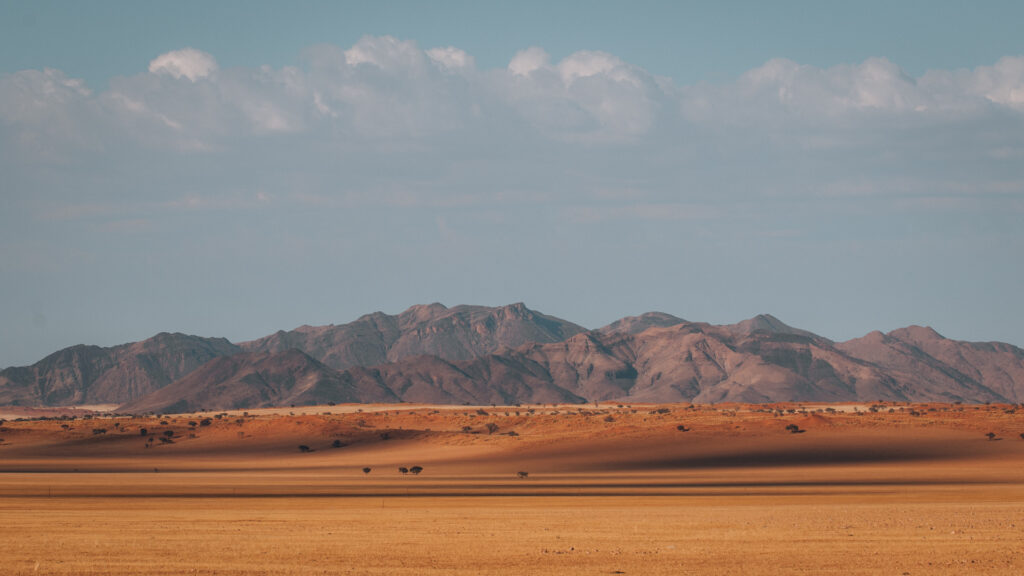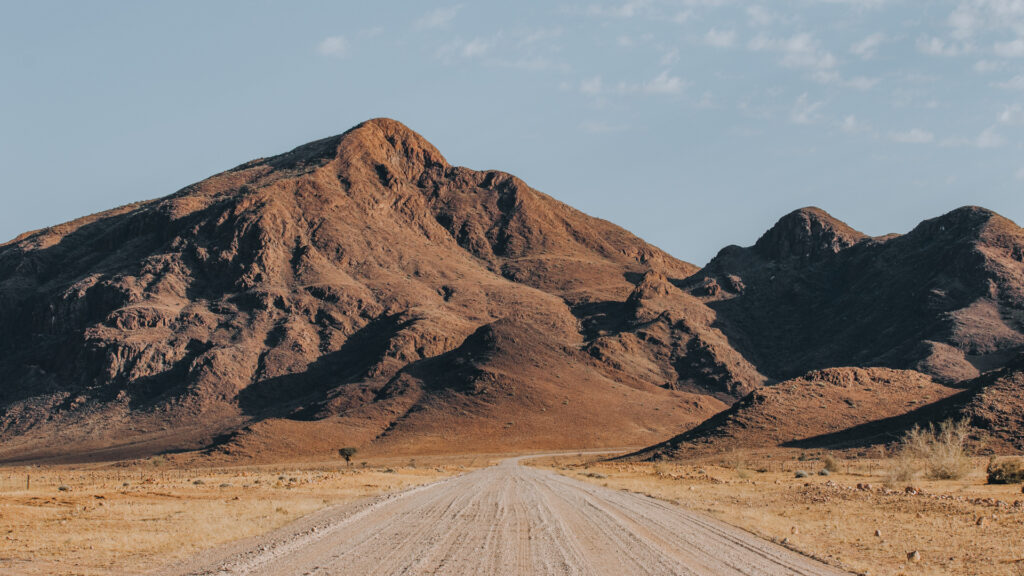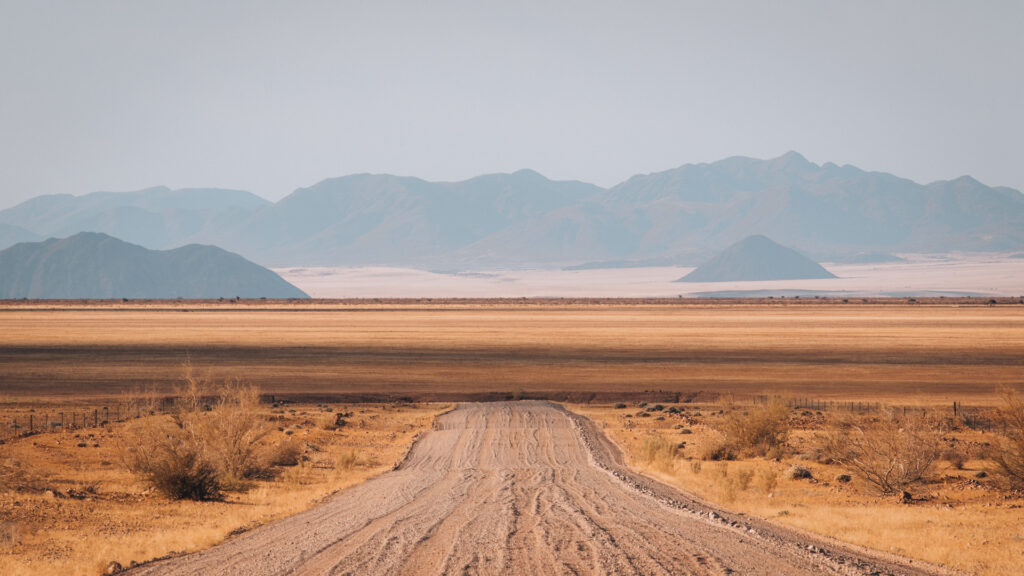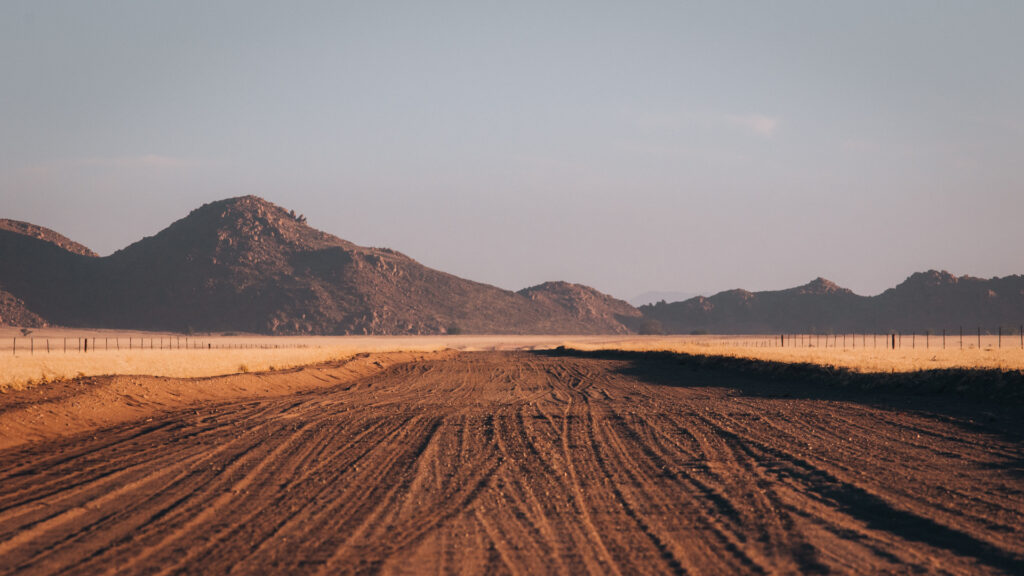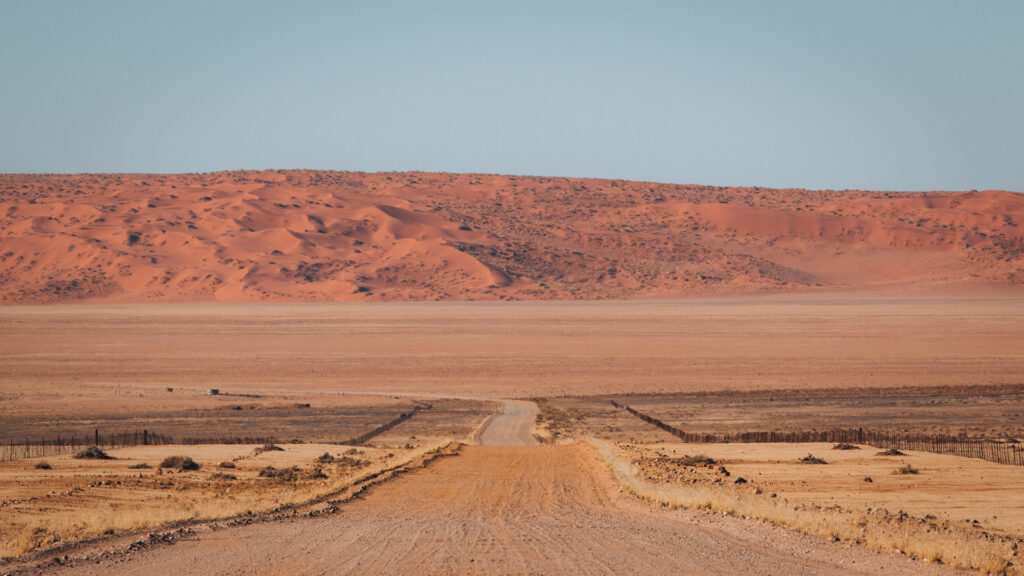The Namib Desert, undoubtedly one of my most spectacular itineraries, with 700 kilometres of sandy roads through the oldest desert in the world. The landscapes of the Namib Desert will transport you to another planet. The rare fauna and flora are impressive to discover. In this article, I describe the route I took between Walvis Bay and Aus.
The first 110 km are undoubtedly the longest, as I leave the sea and Walvis Bay behind me and head straight into a “flat” desert with relief visible in the distance. This flatness is only a visual impression, because during the 110 km, I climb a long false flat to reach the Kuiseb Pass at an altitude of almost 1000 metres. That day, with a headwind, a honeymoon couple I’d met the day before overtook me and stopped. They offered me a lift and I didn’t hesitate long before accepting the offer and heading for Solitaire, the first village. There are a few buildings with a petrol station, a restaurant, a lodge and that’s about it.
From Solitaire onwards, I started to see more and more oryx and also a few ostriches. The landscapes are increasingly beautiful and, surprisingly for a desert, extremely varied in tone and colour, with variations between sunrise, midday and sunset. Camping in these wide-open spaces is an unforgettable experience, but it can also be disconcerting, with no sound when the wind drops.
Sesriem and Sossusvlei
Despite the fact that it’s a very touristy place, I think it’s a must-see. For practical details, you’ll find all the information you need on the Internet. For my part, I met a Breton couple with whom I spent the night at the campsite in Sesriem and they took me by car the next morning to see Sossusvlei at sunrise. It’s possible to get there by bike, but you’ll have to cover 120 km there and back in a day on a tarmac road and add another 8 km on foot there and back to get to the heart of Sossusvlei.

After Sossusvlei, I headed for Betta and on the way I probably took the longest straight stretch of the trip. It wasn’t a very long straight in terms of 32 km, but with its very uneven surface, it seemed interminable! I was still riding through sublime landscapes, with occasional encounters with oryx and ostriches. At the end of the straight, there was an uninhabited farmhouse with an outdoor shower. Discreetly, I entered the property and took a special shower that I’ll remember for a long time.
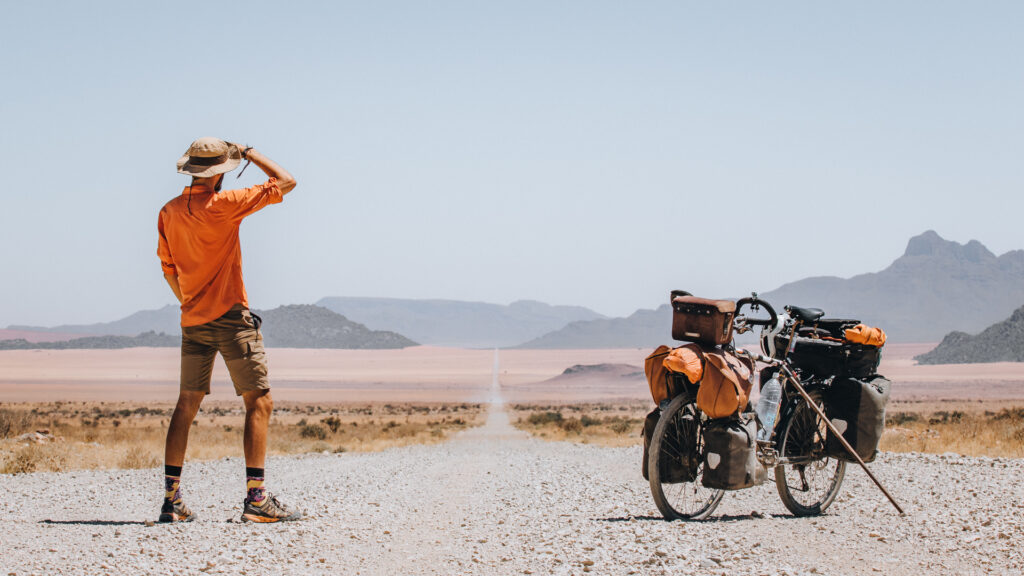
D707
After Betta Campsite, you have a choice of two roads: stay on the main C27 road or turn right onto the D707. The D707 is undoubtedly the most beautiful, but BEWARE, it’s very sandy and even impassable for several kilometres if your tyres aren’t suitable like mine. I pushed my bike in the sand for many kilometres during a whole day. I therefore recommend staying on the C27 main road if you don’t have wide tyres or a fairly heavy bike.

After the D707 it was deliverance, at last I could see the end! But there’s still a long 50 km false flat to reach Aus, tarmac and civilisation. In Aus, after a lot of shopping at the supermarket, I spent the night at the campsite and that evening I was on my own.
700 km of desert that will remain engraved in my memory.
Water points and food
This is without doubt the hardest part to get to grips with. I crossed the Namib Desert at the end of September and beginning of October and the temperatures were already quite hot, reaching 42°C during the day. This has to be put into perspective, because the climate is very dry and the altitude means that the air is refreshing (be careful, temperatures can be close to 0°C in the early hours of the morning). I was much hotter in South-East Asia when it was 32°C. On average, I drank 4.5 litres of water a day, sipping regularly. To avoid this, you can put a scarf over your mouth, but I didn’t have one. You also need 1.5 litres of water for cooking. As for food, I kept it simple with a big breakfast and a big dinner with a few cereal bars for the day.
The different refuelling points
I carried 16 litres of water on the first day, but I quickly changed my strategy. On the following days, I carried a maximum of 8 litres and stopped the few cars I passed to fill up with water, which worked very well. And if you’re lucky, you’ll get some fresh fruit and vegetables with a cold beer aha. It was Covid time, so there were fewer cars than usual, but it was enough to get enough water. And here are some of the refreshment points you’ll find along the way:
- Solitaire (Food/water) KM 233
- Sesriem (Food/water) KM 316
- Betta Campsite (Food/water) KM 454
- And all the lodges and farms you pass on your way can supply you with water. They’re easy to find on Google Map and satellite.
Don’t hesitate to send me a message for more information.
